in the Atlantic Ocean and Adjacent Seas
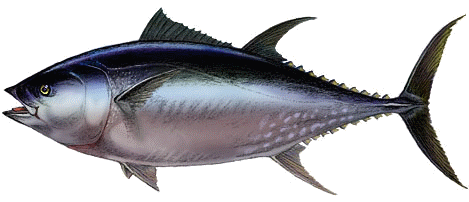
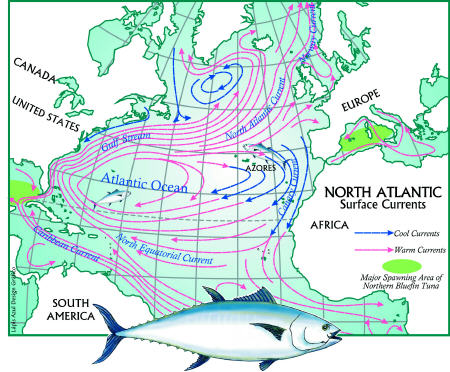
Their two spawning areas are widely separated.� As shown in the stylized figure to the right, the western stock spawns in the Gulf of Mexico (including the Straits of Florida), and the eastern stock spawns in the Mediterranean Sea (also see map, below).� Although they undertake long-range migrations (in one recorded case, 1670 n. mi. in 90 days), less than 10 percent of bluefin tagged on one side of the Atlantic have ever been found on the other side.� Some adults of the two stocks likely intermingle along the Gulf Stream in the mid-Atlantic at the northern end of their respective ranges during their fall feeding period.� But by spring, each stock appears to find its way back to its own ancestral spawning areas - "homing" just as salmon to their natal streams.�
That they are two different populations is underscored by the fact that members of the western stock grow to a much larger maximum size; moreover, they reach sexual maturity at an older age and at three times the weight as compared to members of the eastern stock.� The western stock reaches maturity at 12 years of age and a weight of about 620 pounds. No tagged bluefin that entered the Gulf of Mexico to spawn has weighed less than 600 lbs. In contrast, the eastern stock matures at 4 to 5 years of age (and about 85 to 135 pounds).� (Source, 1998 SCRS Report to ICCAT)
This figure shows the areas of intense spawning activity (dark blue) during late spring, the areas of larval distribution (green), and primary migratory routes of the juveniles (green arrows) and adults (red arrows) within the Mediterranean Sea.� Adults migrate out of the Mediterranean and north to at least the south of the British Isles and formerly into the North Sea.
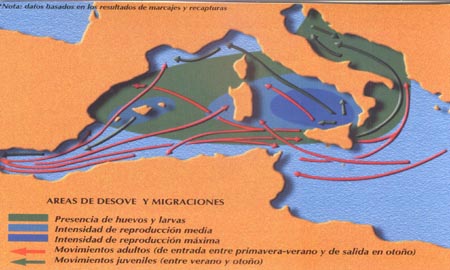
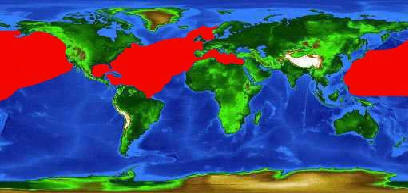
Worldwide Range of the Northern Bluefin Tuna (Thunnus thynnus)
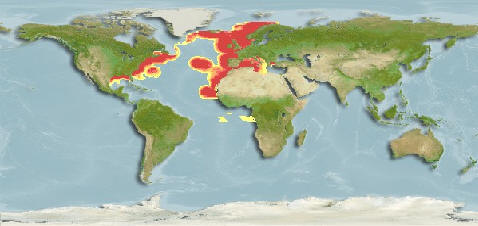
Primary Ranges of the Western and Eastern North Atlantic Bluefin Tuna Populations
Severity of Atlantic Population Declines
Bluefin Tuna
Swordfish
Blue Marlin
White Marlin
Sailfish
Large Sharks
Endangered Species Act
White Marlin Listing Petition
Maps of Spawning and Feeding Areas
Swordfish
Blue Marlin
White Marlin
Sailfish
North Atlantic Currents
Chambers and Associates
Overview
List of All Pages on this Website
Home
World Records and Other Large Game Fish
Index of Photos
Giant Bluefin Tuna - pg. 2
Pulled Overboard
All Tackle World Record Bluefin
Swordfish
Atlantic Blue Marlin - 3 pages
Pacific Blue Marlin - 3 pages
Largest Blue
Marlin Ever Caught
Black Marlin - 2 pages
Bigeye Tuna
Yellowfin Tuna
White Marlin
Sailfish
Spearfish
Large Sharks
Articles on Big Game Fish and Fishing
Overview
Hunting Giants
Hunting Grander Blue Marlin and Bluefin
Those Magnificent Giants
Going, Going, Gone
Headed for Extinction
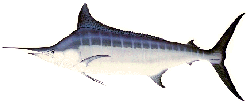
9814 Kensington Parkway
Kensington, Maryland 20895
(T) (301) 949-7778� (Fax) (301) 949-3003